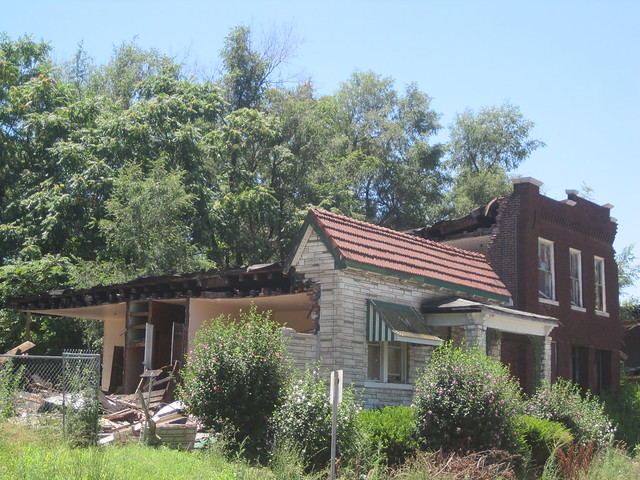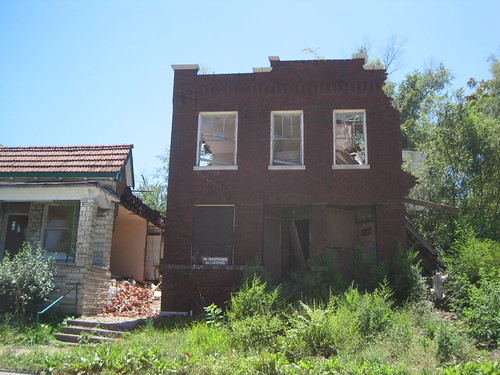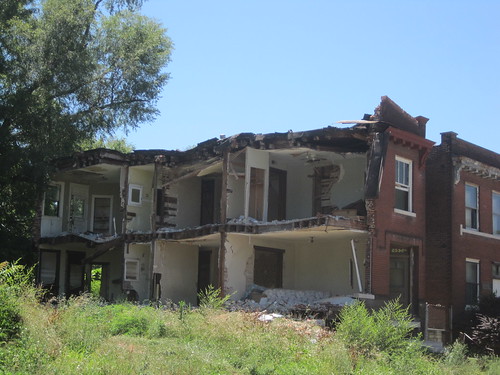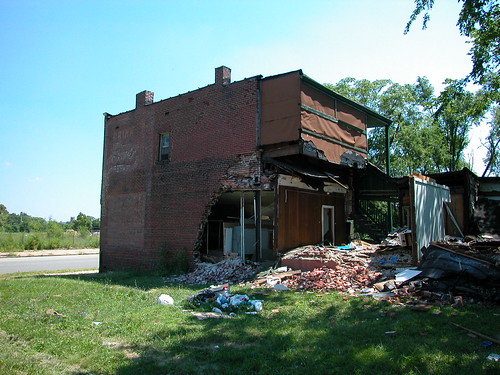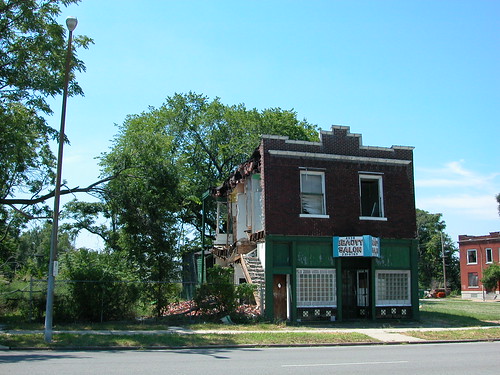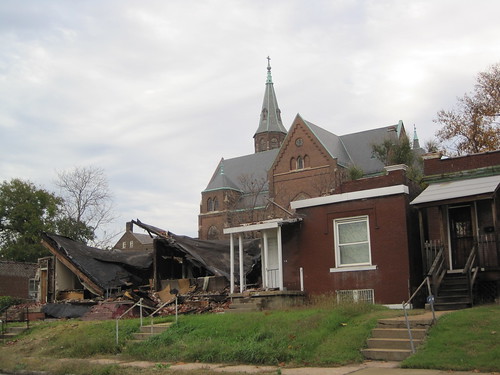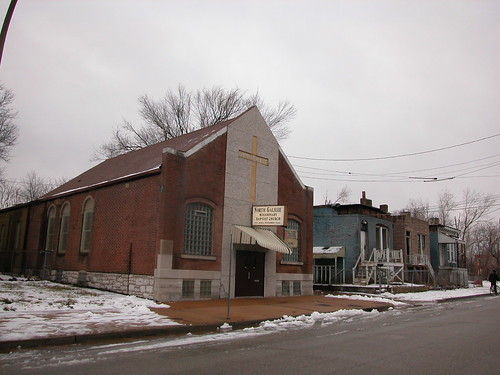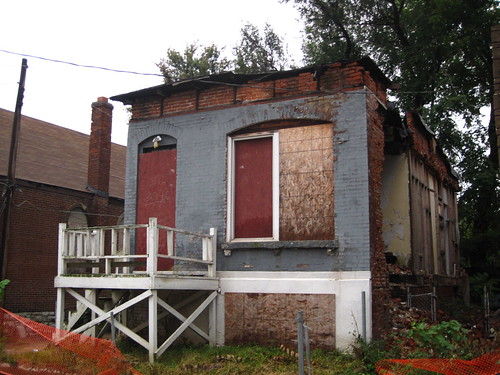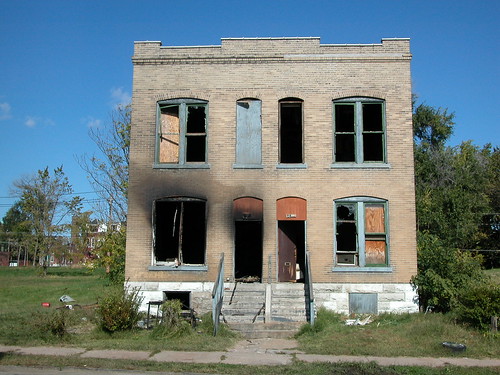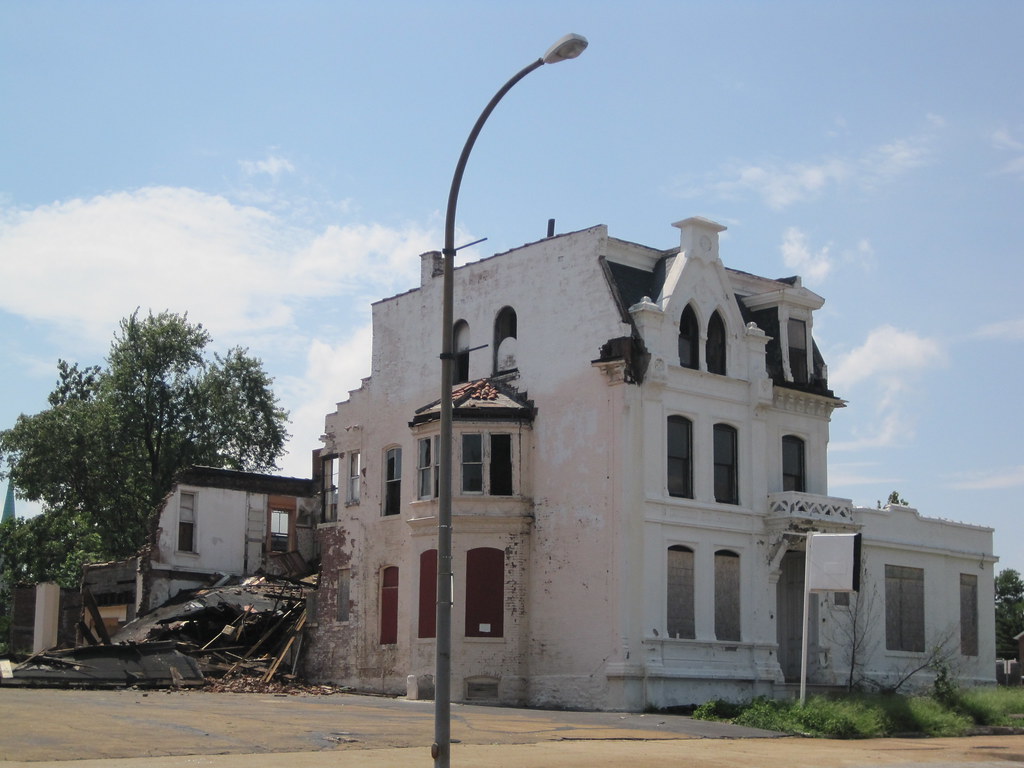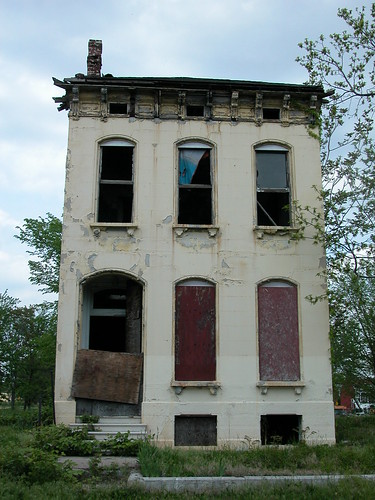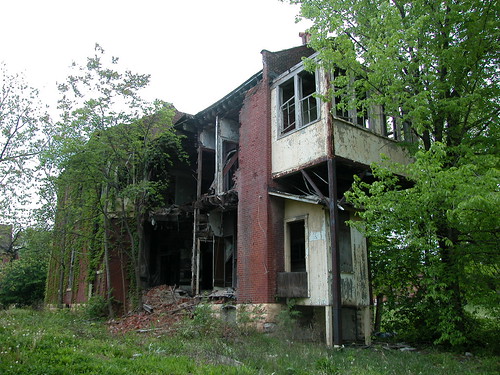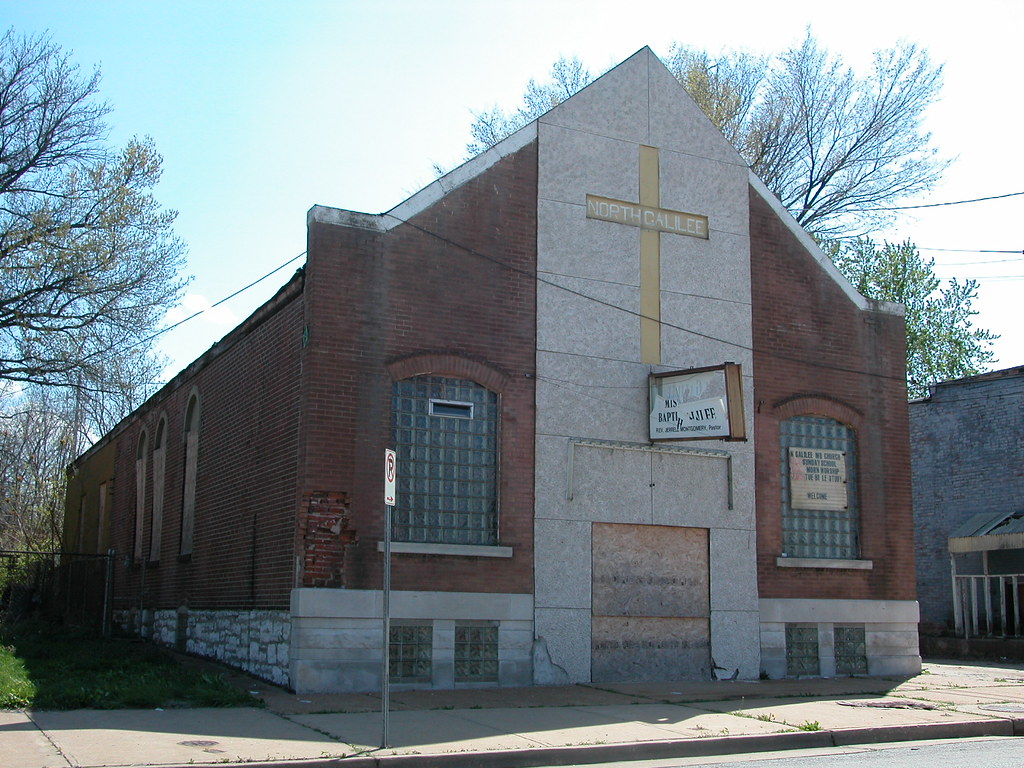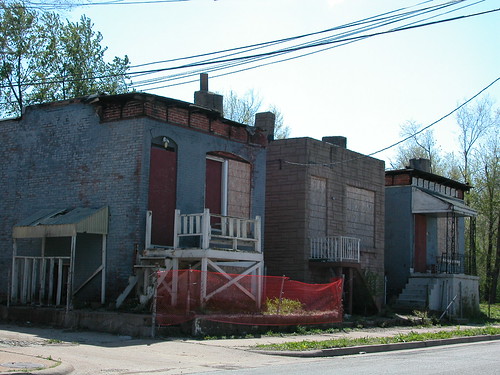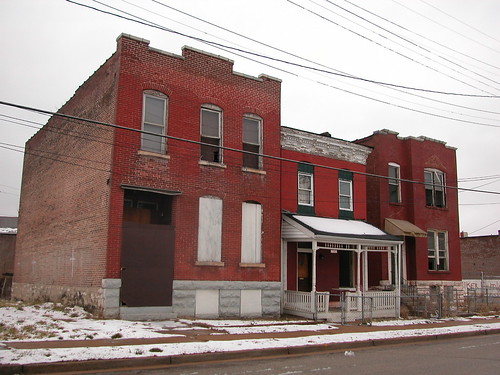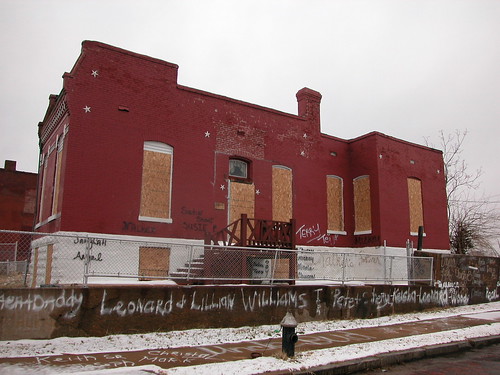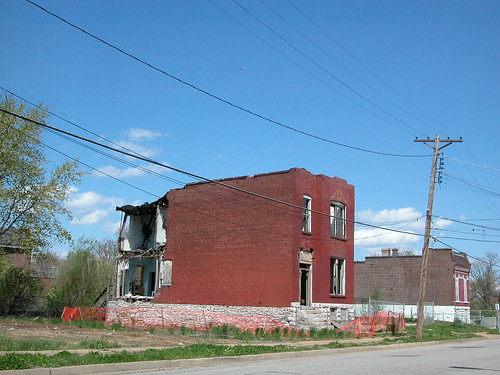by Michael R. Allen

The corner commercial building at 2501 Glasgow Avenue in better days, 2007.Call it collateral damage, block busting, destruction or just the cost of large-scale development — the term doesn’t matter. The reality is that within the boundaries of McEagle Properties’ NorthSide project, historic buildings continue to disappear at an alarming rate. Natural forces have claimed a few buildings, but brick thieves and scavengers are slaying the rest.
Let us look at the loss of buildings on a single city block in the last two months. Our city block is 2539 in JeffVanderLou, which is bounded by Montgomery, Slattery, Benton and Glasgow streets. Now, the condition two months ago was not great: in the sixty years preceding, some 75% of the historic building fabric on the block was lost. Yet what was left three years ago was nearly all occupied. McEagle’s purchases changed that.
Two months ago, enough of the block’s historic fabric remained for at least the possibility of inclusion in a historic district. Even if a district was impossible or undesired, the block’s remaining owners — including the St. Louis Equity Fund — are keeping their buildings in good shape. The Equity Fund is rehabbing its building on Glasgow Avenue. Building loss through neglect is an insult to the owners and residents keeping this block alive.
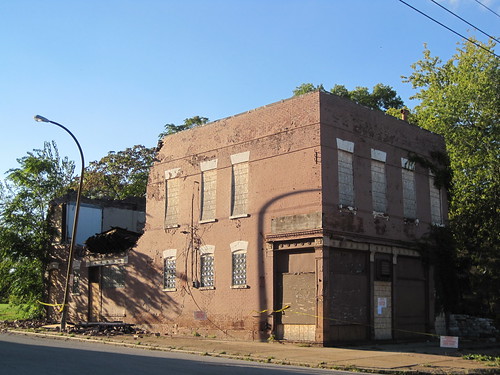 At the start of this essay is an image of the corner storefront building at 2501 Glasgow (at Benton) in 2007. Owned by a McEagle affiliate, this building suffered a partial collapse in storms in September. Brick thieves have started picking, and the photo above taken in early October looks idyllic compared to the current scene.
At the start of this essay is an image of the corner storefront building at 2501 Glasgow (at Benton) in 2007. Owned by a McEagle affiliate, this building suffered a partial collapse in storms in September. Brick thieves have started picking, and the photo above taken in early October looks idyllic compared to the current scene.
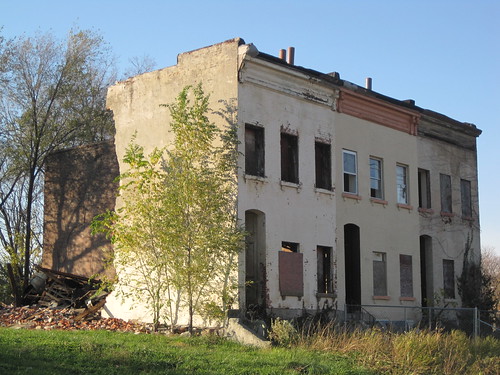 Up the block to the north stands an imperiled row of three historic houses owned by the city’s Land Reutilization Authority (LRA). The front has been altered to shrink the size of window openings, but a magnificent wooden cornice remains. However, the back and sides of the row were part of this fall’s brick harvest at the hands of thieves.
Up the block to the north stands an imperiled row of three historic houses owned by the city’s Land Reutilization Authority (LRA). The front has been altered to shrink the size of window openings, but a magnificent wooden cornice remains. However, the back and sides of the row were part of this fall’s brick harvest at the hands of thieves.
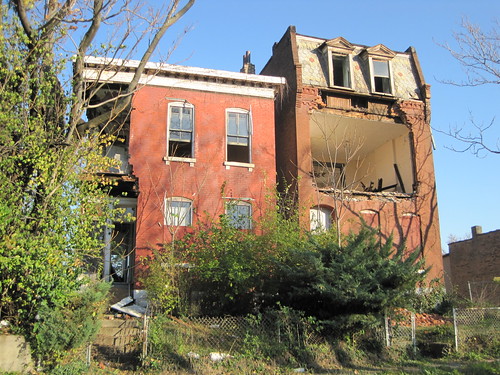 Across the alley on Slattery Street, both the houses at 2616 (owned by Carmen McBride) and 2614 Slattery (McEagle) have been brazenly damaged by thieves. The front walls are being picked apart in plain view of the few remaining residents of the block. Conditions like these explain the continued fear and resentment expressed toward McEagle by north side residents. While there are many residents of the project area hoping for McEagle’s development to transform their blocks, there are many who look at scenes like this one and find little good faith effort on the developer’s part.
Across the alley on Slattery Street, both the houses at 2616 (owned by Carmen McBride) and 2614 Slattery (McEagle) have been brazenly damaged by thieves. The front walls are being picked apart in plain view of the few remaining residents of the block. Conditions like these explain the continued fear and resentment expressed toward McEagle by north side residents. While there are many residents of the project area hoping for McEagle’s development to transform their blocks, there are many who look at scenes like this one and find little good faith effort on the developer’s part.
During the aldermanic committee hearing on the first bills relating to the NorthSide redevelopment agreement, Paul J. McKee, Jr. stated that his company could not deal with problems like the brick-rustled buildings until after he received the Distressed Areas Land Assemblage Tax Credits later this year. Of course, those credits reimburse 100% of demolition and maintenance costs, so both security of intact buildings and clearance of destroyed ones could happen now. Why didn’t McKee direct his companies to engage in clean-up before seeking the largest tax increment financing deal in city history?
McKee and his consultants talk a lot about preservation, urbanism and sustainability. In no way is willful neglect of once-occupied historic buildings compatible with any of those values. Depletion of historic housing stock destroys urban character, wastes precious and irreplaceable natural resources and robs neighborhoods of affordable housing and small business spaces. We are losing solidly built, easily rehabilitated buildings for the uncertainty of a multi-phased project that places areas of St. Louis Place and JeffVanderLou dead last in order of development attention.
Don’t get me wrong: Much progress has been made toward making the NorthSide project better for everyone. I am willing to applaud — and have applauded — real steps that safeguard north side neighborhoods. The redevelopment agreement binds McEagle to identify buildings for preservation and demolition by the end of 2010 — albeit without professional preservation planning. While the contracts and ordinances contain hopeful language, however, the reality is contradictory — and it’s a long way toward the end of 2010.
